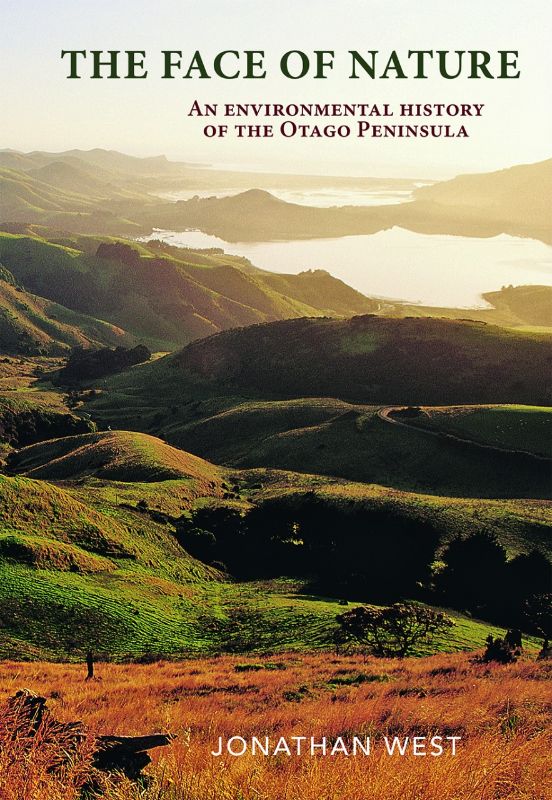Description
Discover the captivating environmental history of the Otago Peninsula in 'The Face of Nature' by Jonathan West. This 388-page paperback, measuring 170 x 240 mm, is a meticulously researched gem published by Otago University Press on 05-12-2017. Journey through time and witness how this stunning landscape, bordered by the Pacific Ocean and a sheltered harbor, evolved from a flourishing habitat for diverse wildlife—including albatrosses, penguins, and seals—to a dramatically altered environment due to human settlement. The Otago Peninsula, crucial to M?ori heritage, saw profound changes from the arrival of the first Polynesians to the end of the nineteenth century. In a reluctant agreement with British settlers in 1844, M?ori split their sacred land, yet preserved the remaining areas integral to their cultural history. Meanwhile, British settlers transformed the landscape into productive farmland to support the booming commercial city of Dunedin, leading to rapid environmental shifts that included the loss of native birdlife, the depletion of inshore fisheries, and the introduction of invasive pests. This beautifully illustrated book not only documents the dramatic transitions from native forests to farmland but also reflects on the environmental consequences of human actions, such as sand-blows, landslides, and more. Ideal for history enthusiasts and environmental advocates, 'The Face of Nature' is a vital read for anyone passionate about the relationship between people and the planet. Secure your copy today and explore the environmental legacy of the Otago Peninsula, available now for prompt delivery.
CONDITION: Brand New
Dimensions: 170 x 240 mm
Pages: 388
Bind: paperback
Author: Jonathan West Publisher: Otago University Press
Publication Date: 05-12-2017
Bounded by the wild waves of the Pacific on the east, and the more sheltered harbour on the west, the Otago Peninsula is a remarkable landscape. Today a habitat for a diverse array of wildlife including albatrosses, penguins and seals, the Peninsula has undergone dramatic changes since it first attracted human settlement. In The Face of Nature: An environmental history of the Otago Peninsula Jonathan West explores what people and place made of one another from the arrival of the first Polynesians until the end of the nineteenth century. The Peninsula has always been one of the places in Otago most important to M?ori. In 1844 they reluctantly agreed to split it with the British, but the land M?ori retained has remained at the core of their history in the region. The British settlers divided their part of the Peninsula into small farms whose owners transformed it from native forest into cow country that fed a booming Dunedin – at that point New Zealand’s leading commercial city. This rigorously researched, beautifully illustrated local history documents the rapid environmental change that ensued, which went far beyond the transformation from forest to farm, to the loss of birds, the exhaustion of inshore fisheries, eruptions of pests and weeds, enormous sand-blows, and huge and sometimes sudden landslides. The speed and scope of change driven by human occupation of the Peninsula were summed up in 1901 by George Malcolm Thomson, natural scientist and historian. I
CONDITION: Brand New
Dimensions: 170 x 240 mm
Pages: 388
Bind: paperback
Author: Jonathan West Publisher: Otago University Press
Publication Date: 05-12-2017
Bounded by the wild waves of the Pacific on the east, and the more sheltered harbour on the west, the Otago Peninsula is a remarkable landscape. Today a habitat for a diverse array of wildlife including albatrosses, penguins and seals, the Peninsula has undergone dramatic changes since it first attracted human settlement. In The Face of Nature: An environmental history of the Otago Peninsula Jonathan West explores what people and place made of one another from the arrival of the first Polynesians until the end of the nineteenth century. The Peninsula has always been one of the places in Otago most important to M?ori. In 1844 they reluctantly agreed to split it with the British, but the land M?ori retained has remained at the core of their history in the region. The British settlers divided their part of the Peninsula into small farms whose owners transformed it from native forest into cow country that fed a booming Dunedin – at that point New Zealand’s leading commercial city. This rigorously researched, beautifully illustrated local history documents the rapid environmental change that ensued, which went far beyond the transformation from forest to farm, to the loss of birds, the exhaustion of inshore fisheries, eruptions of pests and weeds, enormous sand-blows, and huge and sometimes sudden landslides. The speed and scope of change driven by human occupation of the Peninsula were summed up in 1901 by George Malcolm Thomson, natural scientist and historian. I

